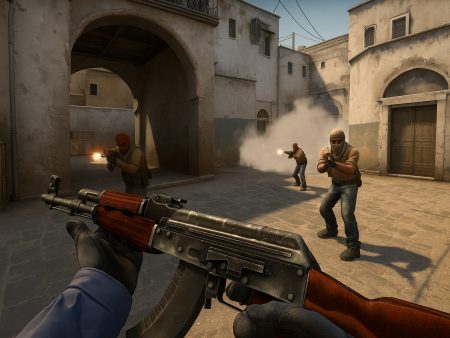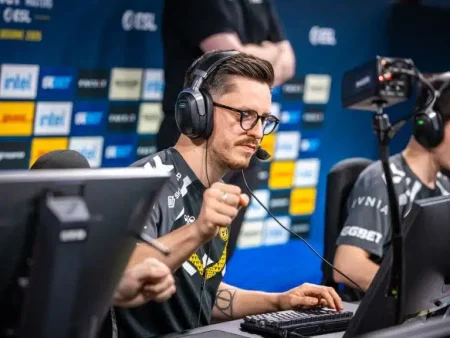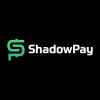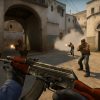Master Overpass in CS2 with this in-depth guide covering callouts, pro tips, strategies, and utility lineups for both T and CT sides. Dominate every match with expert map control and positioning.
Overpass is one of the most iconic and unique maps in the Counter-Strike series. Introduced in CS:GO and carried over to CS2 with visual and layout improvements, Overpass breaks traditional map design in several ways. Unlike most maps that keep T and CT spawns at roughly equal distance to the bombsites, Overpass gives Counter-Terrorists quicker access to both A and B. This means CTs can control parts of the map early and put pressure on Ts immediately after the round starts.
What makes Overpass especially complex is its verticality. You’ve got ladders, elevated positions, tunnels, and multi-level engagement zones like Connector and Heaven. Add that to the open spaces like A Long and the tight chokes like Monster, and you get a map that requires deep understanding, not just raw aim. Timing is everything here. A second too early or too late on a rotation or peek can mean losing a site or securing a round-winning play.
For new players, Overpass can feel overwhelming. But once you break it down and understand the callouts, strategies, and how each part of the map flows, it becomes a playground for creativity and tactical plays. Whether you’re solo queuing or playing with a five-stack, mastering Overpass is one of the best ways to improve your all-around CS2 skills.
Why Overpass is Unique in CS2
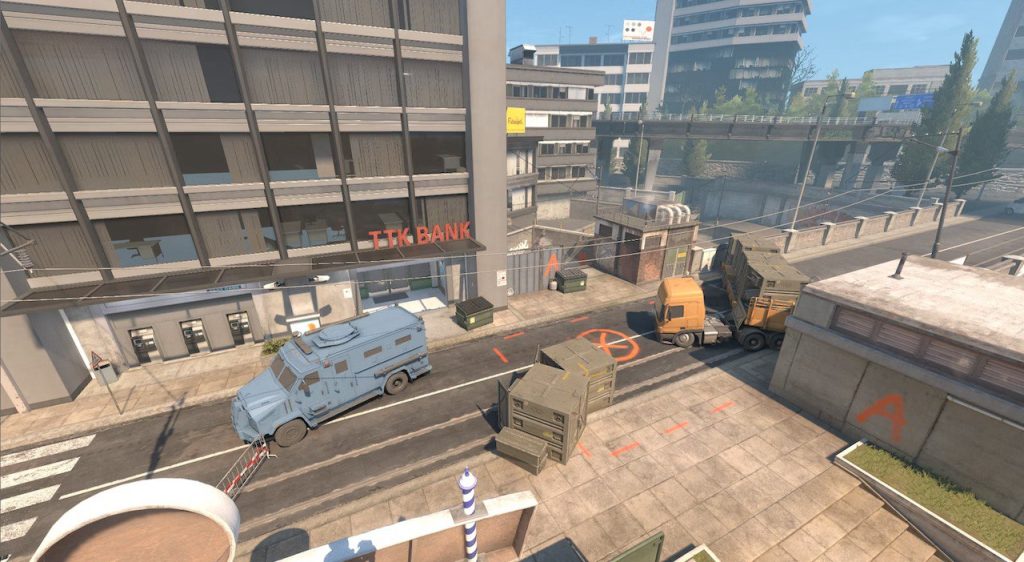
Compared to maps like Mirage or Dust II, Overpass rewards initiative. It’s not a “wait and see” type of battleground—it’s aggressive, cerebral, and filled with mind games. The CT side has an inherent advantage early on with quick access to both sites, and that shifts the meta heavily toward proactive play.
Here’s why Overpass stands out:
- CT Control Opportunities: The Counter-Terrorist team can contest areas like Fountain, Party, and even Playground within the first 10–15 seconds. This allows them to disrupt early T-side plans and control the flow of the round.
- Dynamic Rotations: Overpass rotations can be both a blessing and a curse. While you can rotate quickly through Connector or CT Spawn, if timed poorly, these rotations can leave bombsites exposed or misread.
- Utility-Heavy Meta: Smokes, flashes, molotovs—everything counts more here. Without proper utility usage, taking a site becomes nearly impossible, especially against coordinated defenders holding from strong angles.
- Vertical and Horizontal Layering: Fights happen from above, below, and sideways. From Heaven on B site to the stairs leading from Connector, you’re always fighting in 3D on Overpass, demanding superior spatial awareness.
It’s not just a map; Overpass is a test of game sense, utility knowledge, and coordination. If you’re looking to climb ranks and play like the pros, this map deserves your full attention.
Understanding Overpass Callouts
Complete List of Callouts (A and B Sites)
Knowing your callouts is half the battle in CS2, especially on a map like Overpass. Whether you’re making a split-second rotation or relaying crucial enemy info to your team, having the vocabulary ready will set you apart.
A Site Key Callouts
Let’s start with A site and the surrounding areas:
- A Site – The actual bomb site; typically held from Truck or Bank.
- Truck – Vehicle located on A site, provides hard cover.
- Bank – Room behind A with a cash register, ideal for defending post-plant.
- Default Plant – Common bomb plant spot, between Truck and Optimus.
- Optimus – Metal cabinet behind the default plant spot.
- Bathrooms (Toilets) – Pathway leading from Party to A; common for Ts to push through.
- Long A – Extended path on the far right side from T spawn; used for slow A takes.
- Fountain – Mid-area before Party, contested early by both sides.
- Playground – Early T-control area, safe to peek from.
Understanding these locations lets you predict enemy positions and coordinate pushes or retakes. For example, calling “One Optimus, one Bank” tells your team the key defensive setup without over-communication.
B Site Key Callouts
Now, on to B site—the most fast-paced site on the map:
- B Site – Central area for bomb plant, surrounded by scaffolding and water.
- Monster – Tunnel leading from T side directly to B; key rush path.
- Short B – Path coming from Connector or Water into the site.
- Water (Pit) – Area beneath Heaven; important for site control.
- Heaven – High ground above B site; powerful CT position.
- Barrels – Cover near site; a favorite CT hold spot.
- Graffiti – Back wall behind site.
- Bridge – The short bridge connecting Water to B.
- Sandbags – Corner by Short B; good for surprise peeks.
Each callout is more than just a location—it’s an opportunity. If someone says, “They’re taking Monster fast!” your team knows to throw nades, rotate early, and hold crossfires. Use these callouts religiously.
Map Control and Rotations
Importance of Mid Control
Mid is the heartbeat of Overpass. Whoever commands Fountain, Party, and Connector often dictates how the round evolves. For the Terrorists (Ts), gaining foothold in mid gives you options—to hit A via Toilets, to rotate to B via Connector, or to pressure CT spawn. For the CTs, holding mid denies the Ts freedom of movement and forces them into more predictable, costly paths.
You’ll often see CTs contest Fountain early with a smoke or Molotov, or use a flash to peek. If the Ts let CTs dominate mid uncontested, they’re essentially handing half the map’s control. Conversely, Ts should try to isolate defenders, trade aggressively, or bait utility to clear mid control gradually rather than brute-forcing.
If your team secures mid control, it allows for split pushes: for example, one or two Ts push Toilets toward A while the rest come from Connector to B. That pressure forces CTs to spread thin, increasing your chances of exploitation. So don’t disregard Fountain or Party—those middle paths often decide whether your round is balanced or tilted.
Controlling Connector and Short
Connector is the pivotal link between mid and B. Controlling this area lets you cut rotations, surprise CTs in B side, or enable B splits. Likewise, Short (the route from Connector toward B) is critical. If you lose Short, your B-splits become clunky and easier to defend.
From the T side, early utility (smokes, molotovs) on Connector or Long helps you push in safely. Use flashes over connectors or utility through window/door to blind defenders. After clearing Connector, you can funnel into Short or rotate to A, putting CTs in an awkward crossroads.
For CTs, keeping Connector contested prevents T-side from getting free reign. Even a lone CT presence in Connector can force Ts to spend utility or reposition. If a CT is lost there, rotate quickly or adapt your setup so B doesn’t crumble.
Effective control of Connector and Short often comes down to coordinated trades, timed utility, and map discipline.
Rotation Pathways for CT and T Sides
Rotations are the lifeline of Overpass. Doing them well—or doing them poorly—can win or lose rounds.
- CT Side Rotations: CTs can rotate either via Connector or CT spawn (through Underpass). If B is under threat, CTs often use Connector to get in quickly, especially if mid control is open. But if Connector is lost, CT spawn is the safer route to B or A. Smart rotation timing is key—rotate too early and you leave your original site exposed; too late and you arrive after the bomb is planted.
- T Side Rotations: Ts often fake one site while shifting the bulk of their forces to the other. If you’ve secured Connector, rotating to B is faster. But if A is lightly defended and you spot a weakness via Toilets or Long, rotate back to A. Ts should also beware overcommitting—if you rotate too fast without map presence, CTs might adapt mid-round and counterattack.
- Mid-Round Adjustments: Always leave at least one player watching your backside or holding flanks. If you rotate too hastily without info, you can be punished by CTs rotating into your site. Use smokes and flashes during rotations to mask movement, and communicate constantly about enemy pressure.
In summary: mastering rotations is about reading the round, coordinating with your team, and timing your movements so that your presence is felt where it matters—not wasted.
Overpass for Terrorist Side (T‑Side)
Effective Site Execution on A
Executing on A often revolves around a split between Toilets/Connector and Long. Your goal is to force CTs to defend multiple angles simultaneously.
- Early Mid Presence: Use utility to contest Fountain and pressure defenders there. That draws CTs to mid where they may lose resources or reposition.
- Split Push: Send some players through Toilets into Bathrooms, others from Connector into Party, and a few from Long. Timing is crucial—coordinate your entry so CTs are distracted.
- Use Utility Wisely: Smoke off key positions like Bank, Truck, and Fountain. Use flashbangs over Long and into Bathroom to blind defenders. Molotov or HE for positions like Fountain or Party helps to force defenders out.
- Trade Discipline: As one entry frag comes in, backup players should be ready to trade. Never all-in without support.
- Post-Plant Positions: After the bomb is down, defend from Bank, Truck, or behind the Optimus cabinet. Keep crossfires with teammates, and watch off angles like Toilets or Connector.
An effective A execution is about balance: do not overcommit straight from Long, nor funnel everyone through one path. Diversify your entry, force CTs to split attention, and ensure solid utility execution.
Pushing B Site with Utility
B site is often faster to take but comes with dangers. If done correctly, though, a B push can catch CTs off guard.
- Fast Monster Rushes: Sometimes you just push Monster early before CTs can set up Heaven or Connector rotates. Use flashes to blind defenders in waterfall or barrels.
- Connector-Assisted Push: If you already have Connector under control or CTs are weak there, funnel players from Connector into Short B while others push Monster or Water. Splitting pressure overwhelms CTs.
- Smoke and Molly Usage: Smoke Heaven, Molotov Water, and HE grenade to common CT holds like Barrels or Short. Drop a smoke toward Heaven to block peek, then push in swiftly.
- Staggered Entry: Don’t send everyone at once—send a first wave to clear outer defenses, then collapse in. If defenders fall back, applying pressure while avoiding overextension is key.
- Planting and Afterplant: The ideal plant is either default (center) or close to Short/Bridge depending on your approach. Post-plant holds from Barrels, Water, or Heaven (if someone remains there) are common.
B site often wins rounds early or loses them quickly. Don’t overthink—quick pressure, coordinated utility, and clean entries go a long way.
Mid Round Calling and Map Manipulation
Mid-round is where Ts can truly dictate tempo. Good calls and map presence can force CTs into mistakes.
- Fake Plays: Execute A for a few players while the rest lurk Connector or long, then rapidly rotate to B. This forces CTs to guess.
- Information Gathering: Use your utility to force CT reaction. Peek Fountain or short with flashes and see how CTs respond before deciding where to strike.
- Adaptive Rotations: Don’t rigidly stick to your original plan. If mid — or Connector — is compromised, change target. Confuse the defense.
- Pressure on Flanks: Leave a lurker or two behind to deny CT spawn or connector control. That slows down CT rotations or punishes late arrivals.
- Economy Considerations: If your utility is low or you’re in an eco-like scenario, avoid deep middle plays; instead, pick safer, tighter pushes while trying to outnumber defenders.
Good mid-round calls not only help you transition into a site push but also prevent CTs from playing too confidently or overcommitting rotations.
Overpass for Counter‑Terrorist Side (CT‑Side)
Defensive Setups for A Site
Defending A is all about trade setups, utility denial, and constant awareness of rotating Ts.
- Initial Setup: Usually one player in Bank or behind Optimus, one at Truck, and one closer to Toilets or Connector to contest mid pushes.
- Utility Use: Throw a smoke in Fountain, molotov or HE toward Party, and flash toward Toilets early to delay pushes. Save a flash for entry.
- Crossfires and Safeguards: The Bank/Truck crossfire is classic. One holds from Bank, another from Truck, covering each other’s angles.
- Mid Control Denial: A player close to Connector or Fountain should contest mid—force Ts to waste utility or back off. Even if they lose the fight, they’ve bought time.
- Late-Round Adjustments: If the Ts push A hard, rotate from B carefully. Use your flash or smoke to cover the transition. Don’t rotate blindly—check CT spawn and route before moving.
Remember: Don’t overextend. Stay disciplined, conserve your utilities for when entries happen, and delay the Ts rather than trying to fight aggressively when you don’t have the advantage.
Locking Down B Site Efficiently
B site control is the backbone of many CT wins on Overpass.
- Heaven Control: One or two CTs take Heaven early and control Water and Barrels area. It’s a great vantage point to watch Monster or Water push.
- Close/Short Control: A CT tight to Short can delay a Connector push and relay info to teammates. Early flashes and nades are beneficial.
- Monster and Water Defense: The CT close to Water can molotov or throw utility toward Monster to reduce a fast push. Communicate and trade with teammates.
- Fallback Positions: If Ts break in, fallback to safe positions—Barrels or near Short. Ct’s ideally want to hold crossfires from Barrels and Heaven.
- Smart Rotations: Always have a plan for reinforcing B if needed. If mid is lost, rotate from A via Connector or spawn; keep an eye to flank attempts.
A well-coordinated hold of B means applying pressure on Ts trying to take Connector or Monster while enabling safe trade possibilities.
Proactive CT Map Control
CTs that sit back and wait usually get punished on Overpass. Proactive control is the edge.
- Early Mid Contesting: Contest Fountain, Party, or Connector with nades and flashes to deter Ts early movement.
- Pushing Outside Early: Sometimes it’s worth pushing on Long or Toilets to limit T options.
- Aggressive Flanks: A CT lurker pushing into Connector or Underpass with careful timing can catch Ts off guard.
- Information Gathering: Use utility to probe where Ts are focusing. Based on their aggression, rotate or counter.
- Adapting Dynamically: If T-side forces Connector heavily in multiple rounds, adjust your setup to pre-occupy that area.
A proactive CT side is less reactive and more dictatorial. It forces the Ts to dance to your rhythm, making it harder for them to execute clean strategies.
Essential Utility Usage
Smokes and Flashes for A Site
Utility is indispensable on A. Without properly placed smokes and flashes, entry becomes near impossible.
- Fountain Smoke: Blocks vision for defenders from mid and Bank. Often used early to split attention.
- Bank and Truck Smokes: Smoke Truck angle so that defenders have to reposition; smoke Bank to allow safe entry across.
- Toilets Flash: Toss flashes into Toilets so players pushing through aren’t blind-sided.
- Party/Connector Flashes: Flash from mid or through windows to blind defenders at the back of A.
- Molotov for Party/Long: To flush defenders out of tight corners or corners like Party or Long early in the take.
Pair these with crossfire setups—once utility has drawn CT attention, entry becomes smoother. And always carry at least one flash that you can throw post-smoke to blind rotating defenders.
Best B Site Mollies and Smokes
B site demands precision, because there are many angles and positions to clear.
- Heaven Smoke: Denies CTs from peeking or staying actively in Heaven.
- Short/Bridge Smoke: Hides Ts from CTs who hold Short or Bridge angles.
- Water Molotov: Forces anyone in Water or Pit to step out, giving Ts free ground.
- Monster Flash: Flash over Monster tunnel or waterfall to aid fast entry.
- Barrel/Mollies: Use HE or molotovs to clear Barrels or Short positions to reduce defender presence.
A typical B execution might start with Heaven smoke, Water molly, then short/bridge smoke along with a Monster flash. That sequence forces rotations, allows multiple entry points, and keeps defenders disoriented.
Nade Lineups All Players Should Know
Here are a few staple lineups that every serious Overpass player should practice:
- A Site Fountain Smoke: Stand near T side mid, aim at a window corner, jump throw to cover Fountain. (Precise spots depend on server; practice individually.)
- Truck/Bank Smokes: From mid or Long, aim at high points to cover Truck or bank window. Jump-throws are common.
- B Heaven Smoke: From Water area or mid, aim at specific rooftops and throw to cover Heaven entrance.
- Water Molotov (B): Use damage to force defenders out of Water; often from a jump or edge of site.
- Connector Flashes: From CT mid or Connector entrance, toss consistent flashbangs into Short/Connector to blind defenders during push.
Mastering these lineups means you won’t be fumbling mid-round. In clutch moments, having reliable utility that you can throw reflexively is what distinguishes good teams from great ones.
Common Mistakes on Overpass
Over-Rotating as CT
One of the biggest traps for Counter-Terrorists on Overpass is over-rotating. Because the map is large and has multiple access points between A and B sites, it’s easy to misinterpret enemy movements and abandon a site prematurely. Experienced Ts capitalize on this mistake, executing a fake push that baits rotations and then attacking the now-underdefended site.
Over-rotating typically happens in two scenarios:
- Hearing Utility and Rotating Early: A couple of smokes and a flash on A shouldn’t make three CTs rotate off B unless they have additional information (like bomb sighting or footsteps from multiple players).
- Poor Communication: A player on A hears noise and assumes it’s a full push, but doesn’t confirm. Without intel from Connector or Long, teammates may overcommit, leading to free bomb plants elsewhere.
To avoid this:
- Assign one player to anchor each site unless there’s confirmation of numbers or the bomb.
- Use your utility to delay pushes and get more information before rotating.
- Always communicate exact numbers, timings, and whether the bomb has been spotted.
CT teams that rotate with discipline and data will find Overpass much easier to hold down defensively.
Ignoring Connector Control
Connector is arguably the most pivotal choke point on Overpass. Yet, it’s often neglected—especially by less experienced teams. Failing to control Connector as either side gives your opponent a free highway to rotate, lurk, or surprise with split attacks.
Here’s what happens when Connector is ignored:
- T Side Consequences: You lose a quick rotate path to B, making your transitions slower and more predictable. It also opens the door to flankers who push through and attack from behind during A or B pushes.
- CT Side Consequences: You give up mid control and allow Ts to stack up for fast B splits. Without a player watching or contesting Connector, it becomes impossible to delay a coordinated T-side hit.
Best practices:
- Always have a plan for Connector control each round.
- Pair up if you’re taking it aggressively, and trade effectively.
- If holding passively, use sound cues and rotate utility to discourage enemy peeks.
Connector is the heart of Overpass. Lose it, and you lose the rhythm of the round.
Misusing Utility in Early Rounds
Throwing all your nades in the first 15 seconds of a round might look flashy—but it’s usually inefficient unless you’re going for early control or a rush. Overpass is a map of late-round engagements and fake-outs. Saving utility can make or break your post-plant and retake success.
Common errors include:
- Double-Smoking the Same Area: Two players might smoke the same angle without communicating, wasting resources.
- Using Flashes Blindly: Tossing flashes without listening or confirming enemy presence can desensitize teammates or waste good opportunities.
- No Utility for Retakes: If you’ve used everything by mid-round, you’re entering a post-plant retake dry. That puts CTs especially at a disadvantage.
Better utility habits:
- Designate who throws what before the round starts.
- Hold a flash or molly for late-round clutch or retake situations.
- Practice specific utility for areas you commonly play—default smokes, post-plant mollies, defensive nades, etc.
Efficient utility use not only saves you rounds but helps maintain momentum throughout the match.
Pro-Level Strategies on Overpass
Executing Fake Site Pushes
Faking is one of the strongest tools a T-side can use on Overpass due to the large distance between sites and the temptation for CTs to rotate early.
How to fake properly:
- Commit Real Utility: Throw the same nades you’d use in an actual push—smokes on Heaven or Bank, flashes over Toilets. Don’t just throw one smoke and hope they bite.
- Sell Presence: Send one or two players to shoot, peek, or even die on-site to really sell it. If they trade a kill, it buys enough time for the fake to succeed elsewhere.
- Silent Reposition: While the fake is going on, the rest of the team should quietly reposition for the real hit. This makes the CT rotation slower to respond.
- Watch the Flanks: CTs might respond to a fake by pushing out elsewhere. Keep someone watching Connector or Mid during your shift.
Executed correctly, a fake can win you the round with minimal confrontation.
Using the Clock and Economy
Time and money management are essential in Overpass.
Clock Tips:
- Don’t rush unless it’s a strategic Monster or Fountain push.
- Use the first 20-30 seconds to bait out CT utility and look for picks.
- Execute in the last 20–30 seconds after isolating defenders or drawing rotations.
Economy Tips:
- Ts should be mindful of their nades and weapons—Overpass is utility-heavy.
- CTs should avoid risky buys if they can’t sustain utility. Dry peeking into Toilets or Monster with no flash = free death.
- Force buys can work, but smart usage of pistols + SMGs and crossfires are more important.
Economy shapes the tempo. The smarter team will use both clock and money as tools to manipulate enemy behavior.
Adaptations in High-Rank Play
In Immortal or Global Elite lobbies, players adapt quickly. If you do the same execute three rounds in a row, expect a full counter in the fourth.
To stay ahead:
- Change Defaults: Don’t always play 2 mid, 3 B. Mix in long lurks, early Connector pushes, or fakes from Short.
- Use Uncommon Smokes: Vary your utility so CTs don’t know what to expect.
- Change Tempo: If you’ve been slow, throw in a fast rush. If you’ve rushed, play a slow round. Keep the enemy off-balance.
The best teams stay dynamic. They don’t just play the map; they read the opponents and adjust accordingly.
Best Weapons and Loadouts
T-Side Preferred Loadouts
Terrorists on Overpass benefit most from flexible weapons with good utility capabilities.
- AK-47: Always king. Great for opening duels, one-tap potential, and damage.
- Galil AR: Budget rifle with decent accuracy; solid on light-buy rounds.
- MAC-10: Ideal for fast Monster or Short rushes. Good against eco-buy CTs.
- AWP: Rarely used unless for Long A control or post-plant hold. More of a luxury than a necessity.
- Utility: Prioritize smokes and molotovs. Even if you’re on a partial buy, get one or two smokes per squad minimum.
Buying a rifle with no utility usually means you’ll lose an entry or can’t capitalize on a bomb plant. Overpass is a map where utility matters as much as firepower.
CT-Side Meta Weapons
CTs have the advantage in both spawn position and defensive angles—making precision and strong holds a must.
- M4A1-S or M4A4: Choose based on preference. M4A1-S helps in long duels near Fountain or Long.
- AWP: In the hands of a skilled player, this is a round-winner. Hold Toilets, Monster, or even early Fountain for picks.
- MP9: Great eco or anti-rush weapon. Dominates in close areas like Connector or Party.
- FAMAS: Economic alternative that still holds its own on early rounds.
- Utility: Smokes, molotovs, and flashes for delaying pushes. Essential for holding both A and B.
Weapon synergy with your position matters. For example, a player anchoring Monster should favor MP9 or M4 with a molotov. A long A player might benefit from M4A1-S and extra flashes.
When to Buy and Save on Overpass
Economy in Overpass can swing wildly. Knowing when to invest or save keeps your team competitive.
- T-Side Force Buys: Force buys after bomb plants are viable, especially if you’re setting up a fast B execute.
- CT Eco Rounds: Stack a site and go for a crossfire or surprise play. Invest in deagles or P250s with armor.
- Full Save: If you’re down 1v5 and the bomb is planted—save the gun, especially if it’s an AWP or M4.
- Half Buy: CTs with $2,000–$3,000 can buy upgraded pistols, a flash, and try to push for picks.
- Full Buy: Only buy full when your team can also afford full utility.
Discipline with your economy helps maintain pressure even when you’re behind. Knowing when to cut losses makes a difference over 30 rounds.
Learning from the Pros
Notable Pro Teams with Overpass Mastery
When it comes to Overpass, a handful of professional teams stand out due to their tactical depth and flawless execution. Studying how these top-tier squads approach the map can drastically improve your own understanding.
- Team Vitality: Known for their calculated T-side takes and quick adapts, especially when ZywOo is on the AWP. Watch how they control mid with precision and rotate smoothly.
- Natus Vincere (Na’Vi): Their B-site defenses and rotational awareness are textbook. s1mple often uses unique angles and timings, creating picks out of nowhere.
- FaZe Clan: They use coordinated aggression and often contest Fountain and Connector early. Their mid to late-round transitions are smooth and deceptive.
- Heroic: Famous for pushing Connector or A toilets on CT side, using utility to shut down key zones and gather info efficiently.
If you want to step up your Overpass game, pick a demo from one of these teams and study their approach. Focus on timings, crossfires, utility usage, and how they adapt round-to-round.
Watching Demo Reviews and Streams
There’s no better classroom than a CS2 demo. Whether you’re analyzing your own matches or learning from the pros, watching demos helps you spot mistakes and discover strategies.
Here’s how to do it effectively:
- Start with Your Own Demos: Look for recurring mistakes—bad positioning, poor utility use, or hesitations. Correcting these first helps you build a strong base.
- Watch Pro POVs: Focus on one player and watch how they move, when they rotate, and how they communicate with their team. Learn the rhythm of a proper Overpass match.
- Use Stream Highlights: Many top players upload ranked Overpass games. Watch these to understand individual plays and clutch strategies.
- Use Notepad: Take notes on smokes, flashes, common setups, and mistake corrections.
Watching CS2 is like watching a chess match. The more you understand the logic behind each move, the better you become at making your own.
Practicing Overpass Effectively
Custom Servers and Aim Practice
Before jumping into ranked games, spend time on custom servers to practice angles, shots, and movement specific to Overpass.
- Aim Training Maps: Use workshop maps like Aim Botz or Recoil Master to warm up. Target specific Overpass duels—long-range taps for A Long, flicks for Heaven, etc.
- Peek Training: Practice pre-firing common angles like Barrels, Optimus, or Bank. Overpass has a lot of tight spots; memorizing prefire zones helps.
- Crosshair Placement Drills: Work on walking through Overpass with your crosshair at head level. Practicing this on empty servers makes your muscle memory precise in real games.
Consistent practice sharpens your instincts. The more familiar you are with the map’s layout, the faster you’ll react in live matches.
Utility Practice with Bots
Overpass is utility-intensive, and most rounds are won or lost based on it. So practicing utility is non-negotiable.
- Workshop Maps: Use Overpass-specific grenade training maps. These usually show visual cues and targets for smoke/molly/flash lineups.
- Repetition: Practice one smoke 20+ times until it becomes second nature. Start with A Truck and Heaven smokes, then move to B site setups.
- Custom Games: Load the map with bots off and practice your smokes and flashes in actual positions. Label your binds or setups if needed.
Great utility can open bombsites with minimal resistance. Make it your secret weapon.
Playing with Team vs Solo Queue
While solo queueing teaches adaptability, Overpass shines when you’re playing with a coordinated group.
- With a Team:
- Call split tactics like “3 Toilets, 2 Long A.”
- Use combo smokes for double executes.
- Trade efficiently and hold map control together.
- Solo Queue:
- Focus on filling gaps—anchor a site or take mid control when no one else does.
- Use solo utility to delay pushes or initiate site takes.
- Communicate clearly and use pings if voice comms are silent.
Even if you’re solo, try to play with intent. Every round is a lesson.
Advanced Movement and Peeking Techniques
Jump Spots and Pixel Angles
Overpass has unique angles that reward mechanical skill and map knowledge.
- Heaven to Pit Jump Spot: From Heaven, you can spot Ts pushing from Water or Short without overexposing.
- Jump Peek Playground: From T side, jump peeking Party allows early info gathering with low risk.
- Pixel Angle on A Long: Some CTs play a tight angle watching Long from Bank or near Optimus. Practice these in custom servers.
Just be cautious—relying too much on jump peeking can get predictable. Mix it in as needed.
Boosts on Overpass You Must Learn
Boosts are underrated but extremely powerful.
- B Site Short Boost: Near Sandbags, boost a teammate to get early vision toward Water or Monster.
- Truck Boost (CT Side): Stack a teammate on Truck to get vision over smokes during A-site retakes.
- Connector Boost (T Side): Place a teammate on the ledge above door to surprise CTs rotating through.
Use these boosts in off-rounds, eco rounds, or to catch opponents off guard. Timing is crucial—overuse makes them ineffective.
Communicating with Your Team
Making Efficient Callouts
Callouts should be:
- Clear and Specific: “One Optimus with AWP, another Toilets,” is better than “They’re A!”
- Timely: Don’t call after you’ve died unless it’s still useful. Say it while alive and under cover.
- Short: Use standardized Overpass names—“Party,” “Long,” “Bank,” etc.
Good comms = good synergy. It’s that simple.
Timing and Info Sharing
Great teams aren’t just skilled—they share relevant info.
- “Bomb dropped Party” is vital.
- “Two Monster, one flashed off” helps your teammate on B prepare properly.
- Don’t spam mic. Only share what’s valuable.
Train yourself to think before you speak and you’ll instantly become more valuable to your team.
Conclusion
Mastering Overpass is not about raw aim alone—it’s a comprehensive mix of smart positioning, deep utility knowledge, tight communication, and a flexible mindset. The map rewards proactive play, both from T and CT sides. If you control mid, you control the round. If you manage your rotations and utility wisely, you gain the edge. Whether you’re playing solo or as part of a team, use this guide to approach Overpass with confidence.
Now go out there, take control of Connector, throw that perfect Heaven smoke, and outsmart your opponents on one of the most strategic maps in CS2.
FAQs
What’s the best smoke lineup for B site?
The Heaven smoke is essential. Stand near Water, aim at the rooftop structure across Monster, and jump-throw. It blocks vision from CTs playing Heaven and allows for safer site entry.
How do I play aggressively on Overpass?
Use early-round utility to take Fountain or Party. As CT, push Connector with a teammate. As T, use flashes to pressure A Toilets or go for a fast Monster rush with support.
Should I control Connector every round?
Not every round, but often. It gives you vital map control and rotation power. Mix it up—control it heavily in one round, play passive the next to stay unpredictable.
How to counter an A rush on Overpass?
Delay with a Molotov in Toilets or Fountain. Smoke Toilets entrance or Long, and use flashes. Call for quick rotation from B or Connector once pressure is confirmed.
Which side is easier on Overpass?
Generally, Overpass is CT-sided due to early map control and stronger angles. But with good utility, strategy, and communication, T-side can become just as dominant.
